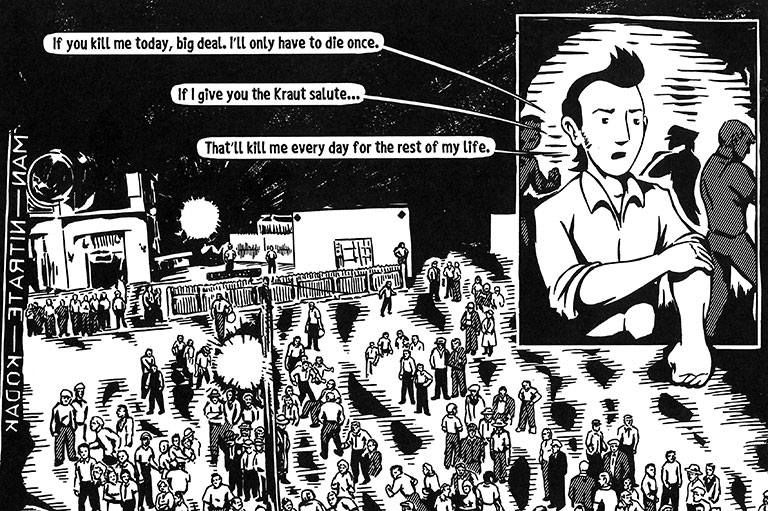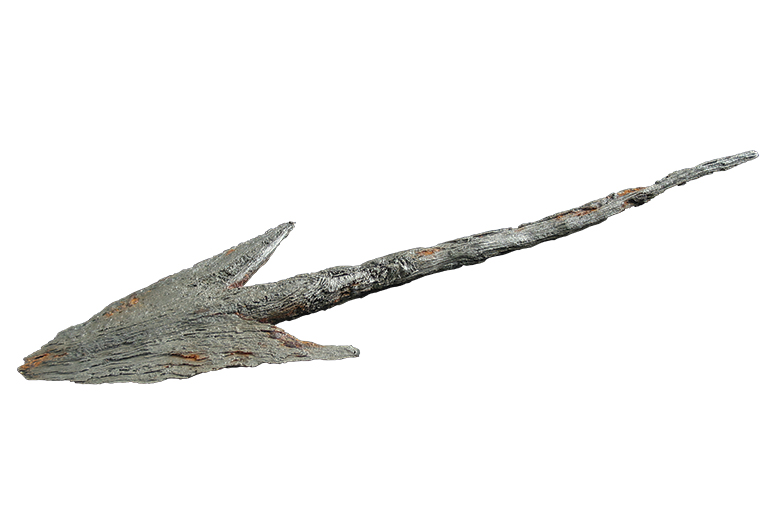Battle at the Ballpark

On August 16, 1933, a Canadian youth baseball game made history — for all the wrong reasons.
The game took place at a time when Adolf Hitler had risen to power in Germany and Jews in Canada were seen as second-class citizens. Some country clubs and private associations even had a “no Jews allowed” policy.

The St. Peter’s team beat Harbord Playground — a team with many Jewish players — at Toronto’s Christie Pits, then officially called Willowvale Park. At the end of the game, a pro-Nazi youth gang held up a flag with a swastika on it, sparking a mass riot.
Thousands of people fought each other, some with baseball bats and iron bars, in the riot that lasted more than five hours. No one was killed, but many were injured, and the clash left its mark on Toronto’s immigrant communities.
Though it made headlines at the time, the riot is largely unknown to many Canadians, says one Winnipeg writer. But he hopes that’s about to change.
Thirty-year-old Jamie Michaels has released the 144-page graphic novel Christie Pits, illustrated by Doug Fedrau and published by Dirty Water Comics.
“The lessons from Christie Pits cannot solve a global crisis,” Michaels said. “They are, however, an unambiguous reminder that those we demarcate as different all too easily become those we perform violence upon.”
With 7 uniquely curated newsletters to choose from, we have something for everyone.
Though the graphic novel is a work of fiction, the characters and events in it are grounded in history. To research Toronto’s history and the Canadian-Jewish experience, Michaels looked at academic works, archives, and newspapers to “get inside the heads” of his characters.

“I became consumed by the history of the riots, as well as the lack of public information about them,” Michaels said. “Public knowledge of these events is drastically disproportionate to both the amount they speak to their time in history as well as the relevance of their lessons for today.”
Michaels, who founded Dirty Water Comics, said the story of the riot has a comic’s soul — it had to be told in the form of a graphic novel.
“It makes this largely unknown history accessible in a way that works at a much quicker speed than a turgid historical textbook,” Michaels said. “We provide Canadian history at 150 miles per hour, no seat belt.”
Thanks to Section 25 of the Canadian Charter of Rights and Freedoms, Canada became the first country in the world to recognize multiculturalism in its Constitution. With your help, we can continue to share voices from the past that were previously silenced or ignored.
We highlight our nation’s diverse past by telling stories that illuminate the people, places, and events that unite us as Canadians, and by making those stories accessible to everyone through our free online content.
Canada’s History is a registered charity that depends on contributions from readers like you to share inspiring and informative stories with students and citizens of all ages — award-winning stories written by Canada’s top historians, authors, journalists, and history enthusiasts.
Any amount helps, or better yet, start a monthly donation today. Your support makes all the difference. Thank you!
Themes associated with this article
Advertisement




